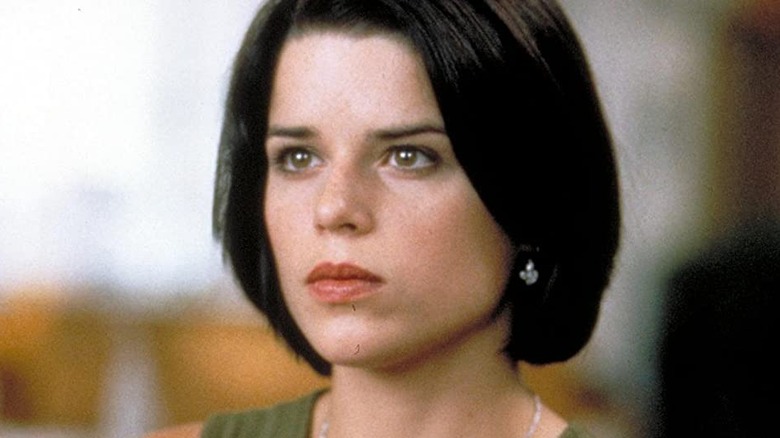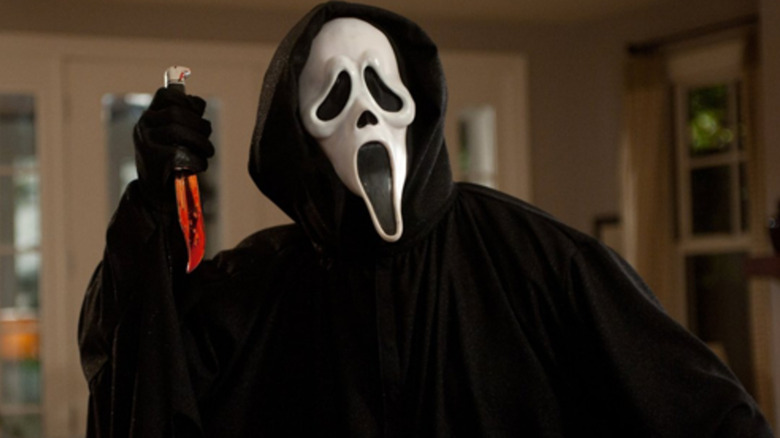How Scream's Editor Saved The Movie
Wes Craven's 1996 horror-comedy "Scream" has firmly cemented itself as a classic of the genre, on the strength of which a fifth film in the series will be released in January 2022. While it might now be uncontroversial to appreciate its signature blend of scares and laughs, during its production, that approach didn't always register for everyone involved.
For instance, Skeet Ulrich, who portrays the suspicious boyfriend of protagonist Sidney Prescott (Neve Campbell), revealed in a recent interview that he initially thought the film was intended to be dark and serious. As a result, he believed co-stars Matthew Lillard and Jamie Kennedy's performances, which are at times over-the-top and largely comedic for the first two-thirds of the movie, were dragging it down, before he learned of its purposely comedic aspirations.
On October 29, in commemoration of the 25th anniversary of "Scream," The Hollywood Reporter published an in-depth oral history of its making that includes another such anecdote, revealing the film was once at risk of drastic alteration or cancelation, but was saved from that dark fate thanks to the quick work of editor Patrick Lussier.
At first, Scream's producers didn't think it would be scary
"Scream" scriptwriter Kevin Williamson recounted first learning of the disappointment of distributor Dimension Films. "Wes [Craven] got the phone call from the studio and I was sitting behind him in my chair and I just saw his back slump," Williamson said.
Producer Cathy Konrad elaborated that the studio's main point of contention was the killer's mask. "They felt like things looked flat. They felt like things were unexciting, that the mask wasn't scary. I was getting calls early in the morning that were very demanding about ensuring that things change," she said.
Things came to a head when, as Konrad recalled, an executive from Dimension Studios requested that the "Scream" crew shoot versions of each scene featuring the killer in new masks, giving the studio options in case they were indeed unhappy with the now-iconic ghostface mask. "No, nobody's doing that," Konrad said. "So the idea was presented, can we cut together what we have shot and can we prove to you it's effective? We were given that courtesy period and Patrick Lussier, who was the editor, worked very quickly and nimbly."
"They immediately called out and said, 'We are so wrong. This works so incredibly well. We can't believe how suspenseful and terrifying this is,'" recalled Lussier. "Scream" as we know it today, then, was more-or-less contingent on that footage wowing the studio bosses at Dimension, an effort Lussier's quick editing largely made possible.

